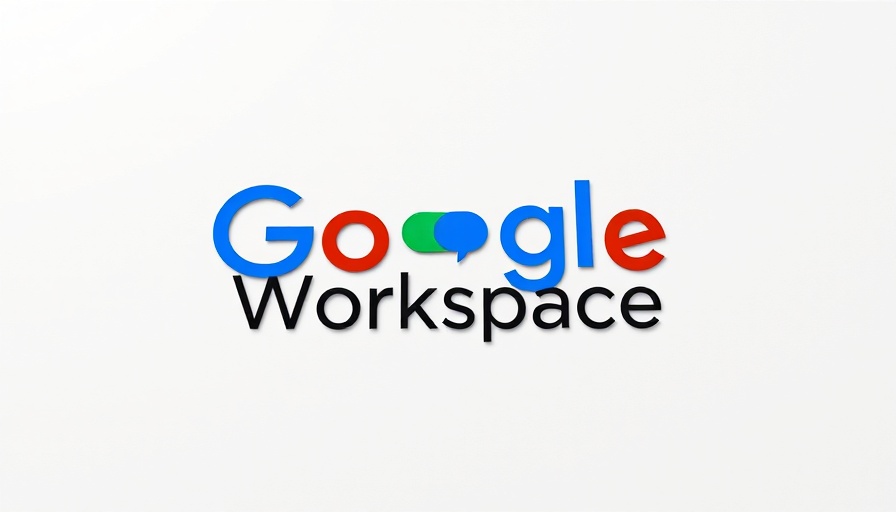
Revolutionizing Remote Communication with Gemini AI
In an era where remote work and digital collaboration have become the norm, Google is stepping up its game with the integration of Gemini AI into its Google Workspace videoconferencing tools. These enhancements, aimed at elevating user experience, focus on image quality and background management during meetings, making it not just a visual upgrade but a significant stride towards streamlined workflows.
How Gemini AI Elevates Google Meet Functions
The latest updates allow Google Meet to utilize Gemini AI’s capabilities to generate custom backgrounds, touch up participants' appearances, and even minimize disruptions with machine-learning-powered background noise reduction. This development is particularly timely as users increasingly depend on virtual meetings to interact, collaborate, and connect remotely.
What does this mean for users? The new features ensure that participants can present themselves in a more polished manner, facilitating a professional image during online interactions—an essential aspect in today’s digital workplace.
Built-in Translation: A Linguistic Leap Forward
Another noteworthy change comes with Google Chat, where real-time translation for up to 120 languages has been integrated directly into the platform. This feature, powered by Gemini, allows teams across the globe to communicate fluidly without the barriers of language, enhancing collaboration and enabling inclusive participation.
As organizations strive for inclusivity and diversity in their teams, such features become invaluable, ensuring everyone feels part of the conversation—regardless of their linguistic background.
Competitive Landscape: Google vs. Microsoft
Despite the impressive advancements, Google is still perceived as playing catch-up in comparison to Microsoft’s robust offerings with Microsoft 365. According to analysts, while Google's integration of Gemini AI aims to equalize the playing field, the inherent challenges that organizations face when transitioning from established tools like Microsoft Office cannot be understated. For many, the effort of switching software, along with the loss of compatibility for existing files and processes, often outweighs the potential benefits of new features.
This ongoing rivalry highlights an important reality in the tech sector: innovation must be coupled with strategic foresight for companies to not just keep pace but lead the way.
Industry Trends: AI in All Aspects of Life
As AI technology evolves, the expectations surrounding its integration in workspaces are also changing. More organizations are looking towards AI-driven solutions to not only streamline tasks but also to enhance user experiences significantly. The promise of generative AI lays in its potential to revolutionize mundane processes into seamless, engaging workflows.
According to industry leaders, ensuring organizational adaptation to such technologies will present opportunities for efficiency improvements and, crucially, increased productivity across sectors.
Looking Ahead: A Transformative Future
What can we anticipate moving forward? As AI solutions become increasingly integrated into daily operations, new trends will emerge, forcing businesses to adapt continuously. With Google’s commitment to enhancing its Workspace offerings through AI, the landscape of digital collaboration is bound to shift, making way for more intuitive tools that promise not only to streamline communication but also to foster creativity.
The integration of AI is not merely a technical upgrade; it represents a broader movement towards a more intelligent and human-centric way of working. As organizations invest in AI tools, they can expect not only operational benefits but a transformation in company culture and engagement as well.
For AI enthusiasts and stakeholders in the tech industry, staying informed about these developments is crucial. The rise of Gemini AI could signify a pivotal moment in Google’s strategy to reclaim its competitiveness in the market, reinforcing the significance of AI as we venture further into the digital age.
How will organizations harness these new tools? The response to these innovations will likely shape the direction of workspace technologies for years to come.
 Add Row
Add Row  Add
Add 




 Add Row
Add Row  Add
Add 

Write A Comment